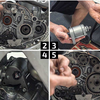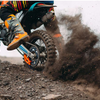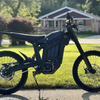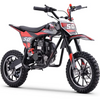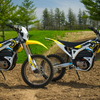What Is the Cheapest Electric Dirt Bike? 5 Reliable Rides Under $1,000
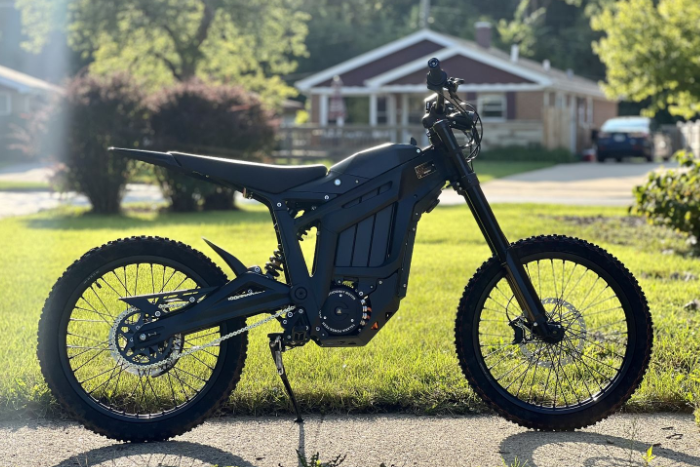
If you’re searching what is the cheapest electric dirt bike, you’ll quickly discover two truths. First, the sub-$1,000 market is real, but it’s dominated by kids’ and youth-size models with 36V systems and modest motors. Second, “cheap” only matters if the bike is safe, reliable, and supported with parts and a return policy. This guide cuts the noise with five reliable directions you can take under $1,000, what specs to expect from each, and how to avoid the duds.
You’ll see why 36V 500W–1000W bikes deliver the best value for young riders, what a realistic top speed looks like (usually 12–17 mph, a bit more for 1000W), and how battery type (sealed lead-acid vs. lithium) changes both speed hold and runtime. Because customer support matters more at this price, you’ll also get a simple buyer checklist for warranty, returns, and spare parts, plus quick notes on sizing and terrain so you don’t over- or under-buy.
To keep the copy brand-light while still being practical, we’ll reference a single representative youth listing once so you can compare shape, seat height, and spec style in context. Use this as a field guide: pick your rider size, match the voltage and motor power, then buy from a seller with clear support and you’ll get a budget bike that’s actually fun to ride—not just cheap on paper.
What “Under $1,000” Really Gets You

In this band you’re primarily shopping youth minis and small-frame trail bikes with 36V batteries. Motors typically range from 350W to 1000W, speeds live around 12–17 mph (sometimes 18–22 mph for well-tuned 1000W), and runtime is about 20–40 minutes for sealed lead-acid packs or up to an hour for lithium equivalents. Frames are compact, seat heights sit low for confidence, and brakes are usually cable or hydraulic discs sized for lighter riders. These are perfect for backyards, cul-de-sacs, mellow dirt lots, and beginner-friendly OHV skills areas. They are not intended for public roads.
The 5 Cheapest (and Reliable) Ways to Buy Under $1,000
1) 36V 500W Youth Mini (Best first bike for most budgets)

This is the sweet spot for “my first real dirt bike” that won’t overwhelm a younger rider. A 36V pack and a 500W motor offer predictable torque and a top speed near the mid-teens on flat ground with a lighter rider. You’ll usually get front and rear disc brakes, basic suspension, and either sealed lead-acid or lithium. Lead-acid is cheaper up front; lithium holds speed better late in the ride and charges faster. Look for a clear age/weight range, a posted return policy, and visible stock of consumables like brake pads, tubes, and chargers.
2) 36V 1000W Youth Mini (Fastest feel under $1,000)
If your rider is edging out of the entry lane, a 1000W 36V bike adds punch for packed dirt and light hills. Expect a realistic 18–20 mph with smaller riders and a seat height a touch taller than the 500W class. Make sure there’s a parental speed limit or adjustable mode, confirm the brake setup, and check tire size for replacement availability. If the listing says 22+ mph, assume that’s ideal surface and rider; plan a few mph lower for mixed terrain.
3) 36V Lithium “Lite” Editions (Same voltage, better feel)
Some budget models ship with a smaller lithium pack instead of lead-acid. On paper, watt-hours may be similar, but the real advantage is voltage stability: the bike holds speed longer as the battery drains, so kids feel less drop-off near the end of a session. Lithium also cuts a bit of weight and usually trims charge time. These “lite” trims often sneak under $1,000 during promotions and are worth it if you value a consistent ride.
4) Refurbished or Open-Box Youth Bikes (Value with a warranty)
Reputable stores that take returns will list refurbished units with fresh consumables, a test log, and a shorter—but still meaningful—warranty. Prices can land $100–$250 less than new. This is a smart way to get a lithium pack or 1000W motor without crossing the $1,000 line. Insist on a serial number, a written return window, and confirmation that chargers and manuals are included.
5) “House-Brand” Minis from Powersports Retailers (Low price, easy parts)
Large retailers often private-label youth e-dirt bikes sourced from established factories. The advantage is parts continuity: the same retailer sells replacement rotors, throttle assemblies, tubes, and chargers. Filters for “under $1,000” plus the retailer’s “in-stock parts” page are your safety net. Read reviews that mention assembly, brake adjustment, and how the seller handled any DOA issues—service responsiveness is the make-or-break here.
A Representative Youth Example (use once, brand-light)
When you need to show size and layout to a parent or coach, a single product page helps set expectations on seat height, wheel size, and control layout. Here’s a neutral anchor you can reference one time in your article flow: a 36V mini electric dirt bike with dual suspension, disc brakes, modest top speed, and simple controls suitable for supervised practice on private property or OHV family loops.
Suggested anchor text: 36V mini electric dirt bike → link to your product page once.
Speed & Range: Set Realistic Expectations
A common disappointment happens when shoppers take the highest advertised number as a promise. Think in ranges. With a 36V 500W bike and a 70–90 lb rider on hardpack, you’ll usually see 13–16 mph. With a 36V 1000W bike and a 60–80 lb rider, 18–20 mph is realistic; add hills or 20+ extra pounds and drop 2–3 mph. Tire pressure, surface, and temperature matter: grass and sand slow things down; cold weather reduces battery output; soft pressures add drag but improve grip. Runtime follows the same logic. Most lead-acid packages deliver 20–40 minutes of mixed use; lithium trims can stretch to 45–60 minutes at the same pace.
Battery 101 in the Budget Lane
In sub-$1,000 bikes you’ll meet two chemistries. Sealed lead-acid (SLA) costs less, is heavier, sags more as it drains, and needs to be stored charged to avoid sulfation. Lithium-ion weighs less, holds voltage higher late in the ride, and tolerates partial charges well. If you ride often, lithium’s better “feel” and quicker charging improve the day-to-day experience. If your use is occasional and sessions are short, a well-supported SLA model is still a fine choice—just keep the pack topped and out of the cold.
Fit & Sizing: Height, Reach, and Confidence
Seat height and bar reach matter more than peak speed for new riders. Aim for a stance where the rider can comfortably dab a foot on uneven ground without stretching. If you’re between sizes, choose the smaller frame first; control beats speed for confidence and safety. Check weight limits, too—many minis list 120–150 lb maximums. Exceeding them reduces speed and stresses brakes.
Safety Setup That Doesn’t Break the Budget
Budget doesn’t mean cutting corners. Put a DOT-rated full-face helmet, gloves, sturdy shoes or youth boots, and knee-elbow pads at the top of the cart. Teach a simple pre-ride ritual: spin wheels to check drag, squeeze each brake for bite, scan tires for pressure and cuts, and tap the throttle while the rear wheel is off the ground to confirm smooth response. Supervise every session and keep rides on private property or designated OHV areas—these bikes are not built or equipped for public roads.
Buyer Checklist (Save This)
Confirm there’s a written return policy with days clearly stated and who pays return freight. Read the warranty to see what’s covered on batteries, motors, and controllers, and how claims are processed. Visit the parts page and ensure pads, tubes, throttles, chargers, and plastics are actually in stock. Look for assembly clarity: many minis arrive 85–95% assembled and need bar, wheel, and brake alignment. Check support channels—email, phone, and chat—and skim reviews that mention how the seller handled issues. Finally, note the charger spec and plug type; a well-matched charger saves time and battery health.
The Shortlist: Which One Should You Choose?
Pick the 36V 500W class if the rider is brand new, small framed, and you want calm learning sessions with speeds in the low- to mid-teens. Choose 36V 1000W if the rider already balances well, rides bikes or scooters confidently, and you want a bit more torque for grass and gentle hills. Consider 36V lithium trims if you value consistency across the ride and quicker charges. Go refurbished/open-box to squeeze in a lithium pack or 1000W motor while staying under budget, but only if the warranty is in writing. Use house-brand retailer models when parts availability and simple service matter most.
Maintenance Made Easy (and Cheap)
Keep tires at recommended pressure, clean and lube the chain, and check spokes periodically. Don’t wash electrics with a pressure washer; use a gentle hose or damp cloth, then dry. For lead-acid packs, put the bike on the charger after each ride; for lithium, top up before rides and store around half charge if it’ll sit for weeks. Tighten axle nuts and bar clamps after the first few sessions as parts settle. These five-minute habits make a budget bike feel “expensive” for far longer.
Conclusion
The answer to what is the cheapest electric dirt bike is less about a single model and more about choosing the right sub-$1,000 lane. For young riders, a 36V 500W mini is the safest and most affordable on-ramp. If your rider is ready for more punch, a 36V 1000W bike keeps speeds exciting while remaining manageable. Lithium “lite” editions improve consistency and charge time without blowing the budget; refurbished and open-box units can unlock better specs for less if they come with a real warranty. House-brand minis from established retailers trade unknown logos for clear parts and support—exactly what you want on a budget.
Set expectations around 12–17 mph (a touch higher for 1000W), 20–40 minutes of mixed runtime on lead-acid or up to an hour on lithium, and a frame that fits the rider today. Safety gear, supervision, and a simple pre-ride check turn an inexpensive bike into a confidence machine. If you want a concrete size and control reference for planning, include a single, brand-light anchor—like a 36V mini electric dirt bike—to visualize controls, seat height, and basic specs before you buy. Do that, and you’ll land a cheap electric dirt bike that’s more than a deal; it’ll be the ride that gets a new rider hooked for life.
Frequently Asked Questions
What is the cheapest electric dirt bike that’s actually worth it?
The best value under $1,000 is a 36V youth mini with a 500W motor, front and rear disc brakes, and either a lead-acid or lithium pack, backed by a written warranty and visible spare parts. It balances safety, speed, and price for first-time riders.
Is a 36V 1000W electric dirt bike too fast for kids?
For brand-new riders, start with 500W and parental speed limits. Confident kids with bike experience can handle 1000W in supervised settings, but expect 18–20 mph on flat ground and set limits until skills catch up.
How long will a cheap electric dirt bike run on one charge?
Lead-acid setups usually deliver 20–40 minutes of mixed riding. Lithium trims can stretch closer to 45–60 minutes at the same pace, hold speed better near the end, and charge faster.
Are cheap electric dirt bikes street-legal?
No. Minis and youth e-dirt bikes are off-road vehicles. They lack DOT lights, mirrors, and registration. Ride on private property with permission or at OHV family areas; keep them off public roads.
What should I check before buying a budget e-dirt bike?
Verify the return policy and warranty in writing, confirm spare parts availability, read assembly instructions, and check support channels. Look for realistic speed claims, posted weight limits, and a charger that matches the battery chemistry.
